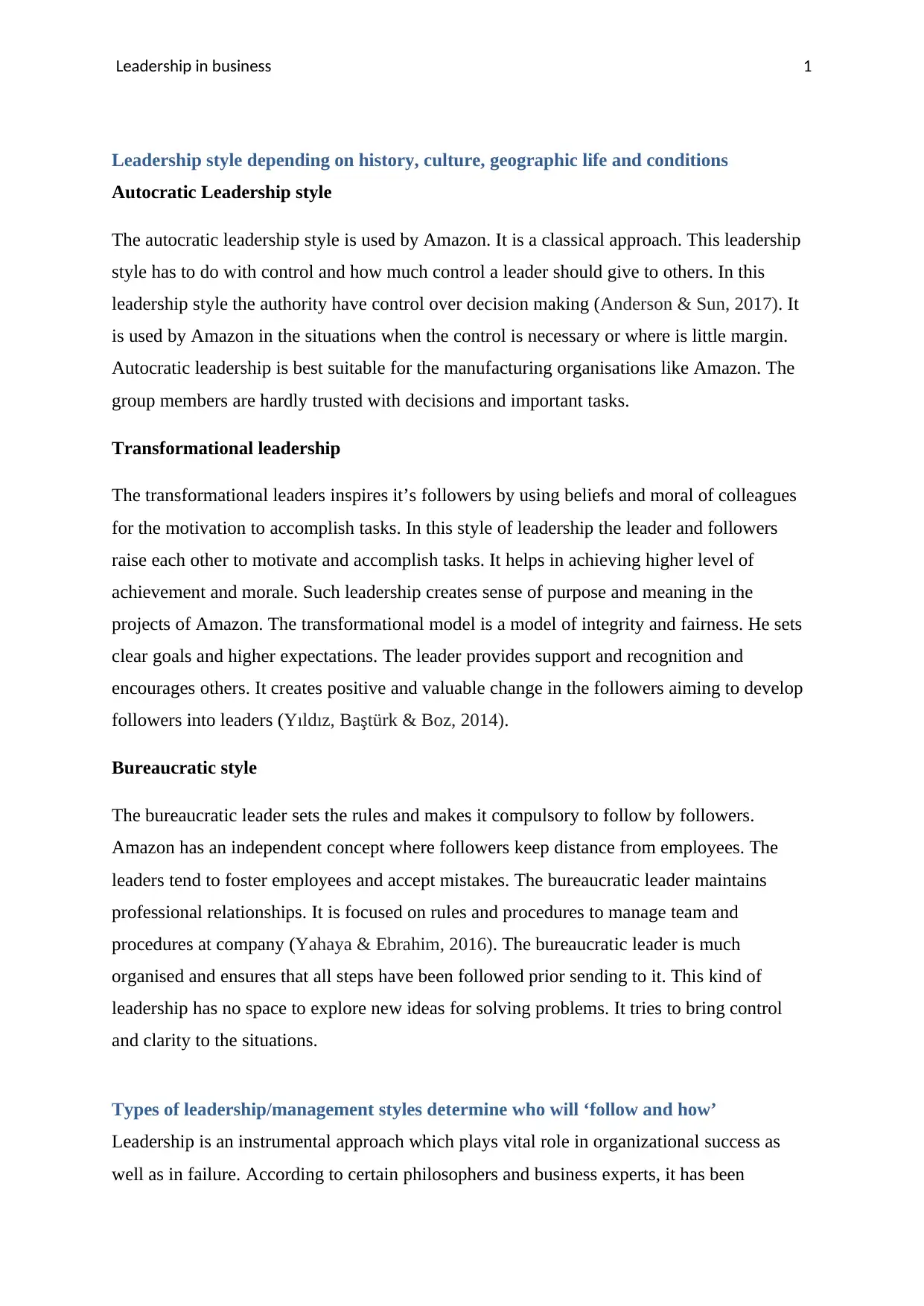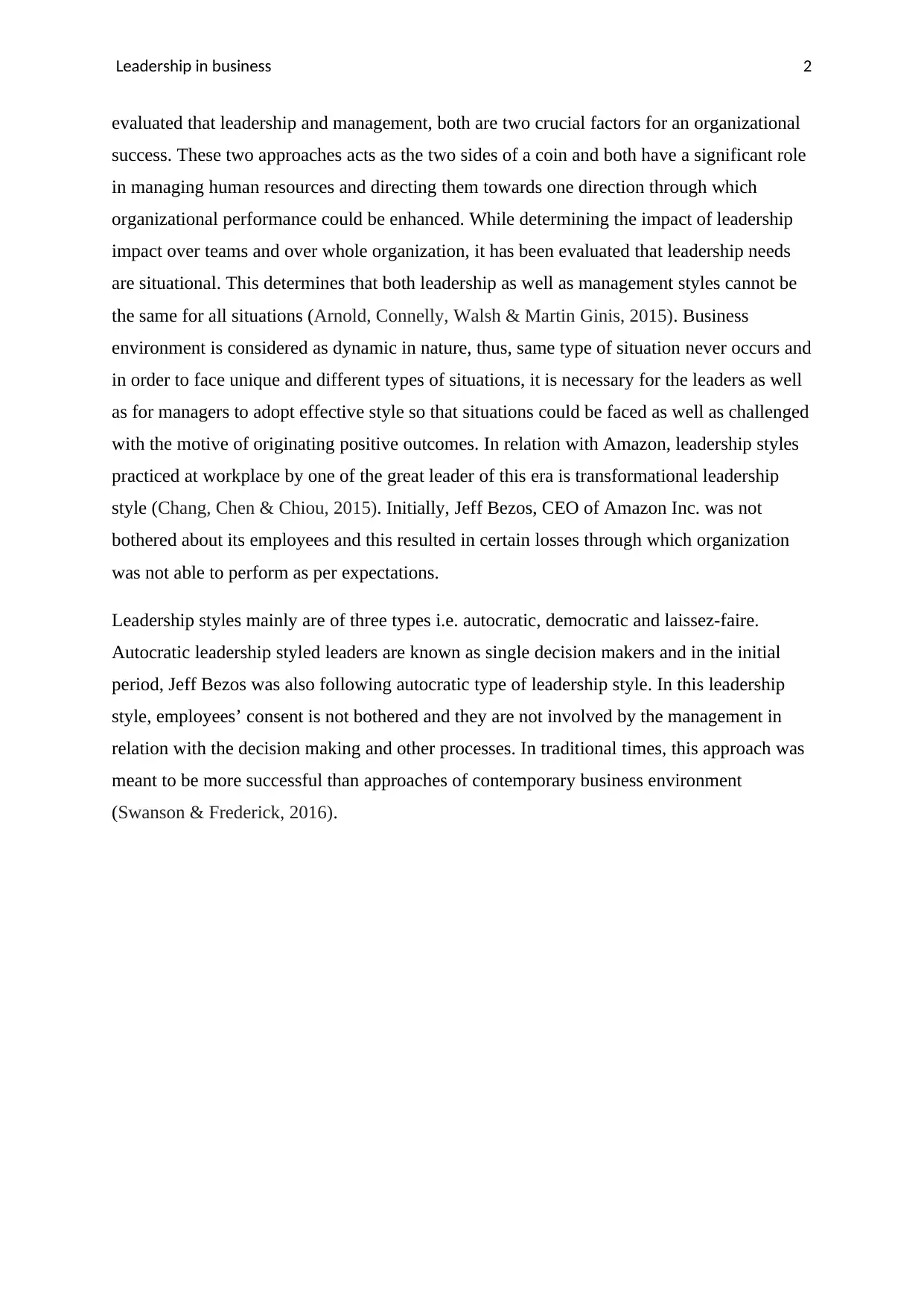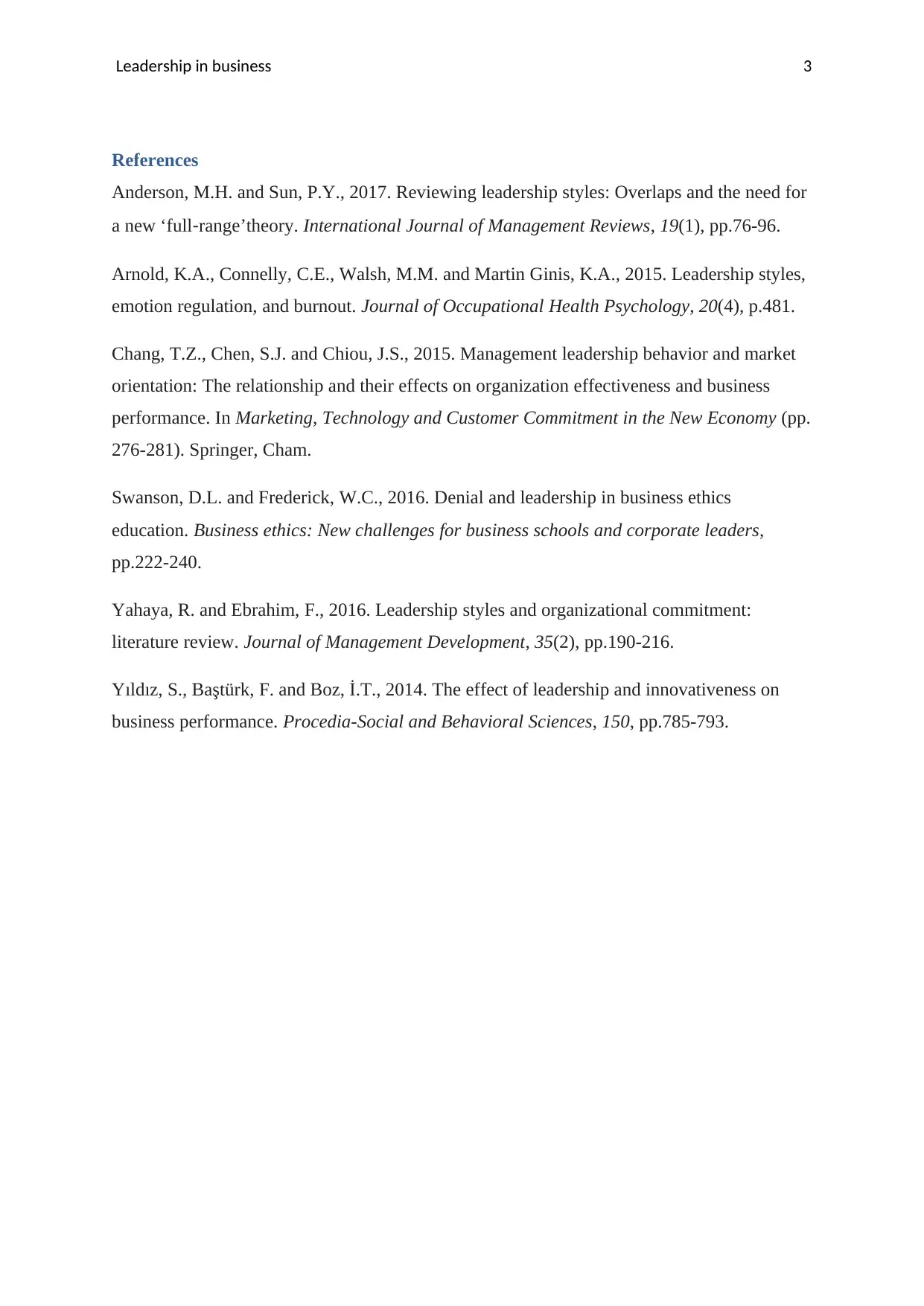Leadership Styles in Business: Amazon Case Study Analysis
VerifiedAdded on 2021/06/14
|4
|967
|79
Report
AI Summary
This report delves into the leadership styles employed by Amazon, examining the autocratic, transformational, and bureaucratic approaches. The analysis highlights how Amazon utilizes these styles, with specific examples of their application within the organization. The report identifies that Amazon has utilized autocratic leadership, especially in situations requiring tight control, while also incorporating elements of transformational leadership to inspire employees. Additionally, the report acknowledges the presence of bureaucratic elements, focusing on the importance of rules and procedures. The report also discusses the impact of leadership styles on organizational success, emphasizing the dynamic nature of the business environment and the need for leaders to adapt their styles to different situations. The influence of Jeff Bezos' leadership is also discussed, especially in the context of the transformational approach. The report concludes by providing references to support the analysis.
1 out of 4











![[object Object]](/_next/static/media/star-bottom.7253800d.svg)